Animals possess a variety of fascinating adaptations, with teeth being one of the most intriguing.
While we often associate sharp teeth with ferocity, many creatures surprise us with their dental structures.
This list explores 16 animals whose tooth counts astonish even the most seasoned nature enthusiasts. From the depths of the ocean to the canopies of rainforests, these creatures boast dental features that go beyond the ordinary.
Their teeth serve functions ranging from hunting and feeding to defense and communication. Discover the unexpected dental wonders of the animal kingdom.
Dolphin
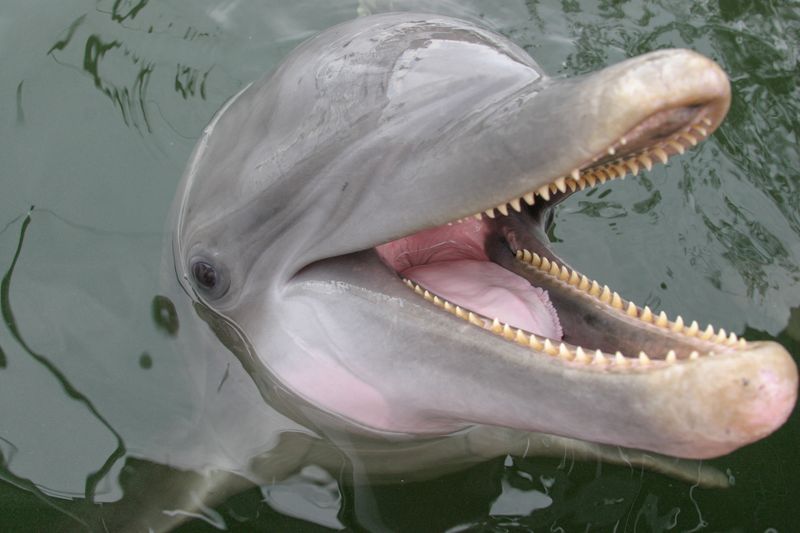
Dolphins, known for their intelligence and playful nature, have a surprising number of teeth. In fact, some species boast up to 100 conical teeth, perfect for catching slippery prey. Interestingly, these teeth are not used for chewing but for grabbing and holding fish.
Despite their formidable tooth count, dolphins are gentle creatures. Their teeth serve more as tools for survival rather than intimidation. Dolphins swallow their food whole, relying on their teeth for capture rather than mastication.
The intriguing dental structure of dolphins underscores the complexity of their oceanic life, combining elegance with efficiency.
Crocodile
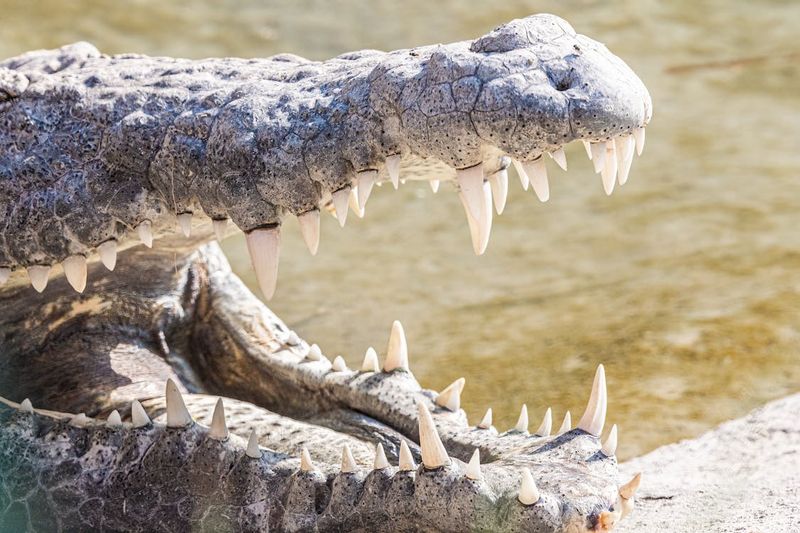
Crocodiles are often seen as river monsters with teeth to match. These ancient reptiles can have up to 68 teeth at any given time, but what’s even more fascinating is their ability to replace them throughout their life.
Each time a crocodile loses a tooth, a new one grows to take its place. This ensures they maintain their fearsome bite, essential for catching prey in their watery habitats. The adaptability of crocodile teeth makes them formidable predators.
With teeth designed for gripping and tearing, they are perfectly equipped for their carnivorous lifestyle.
Opossum
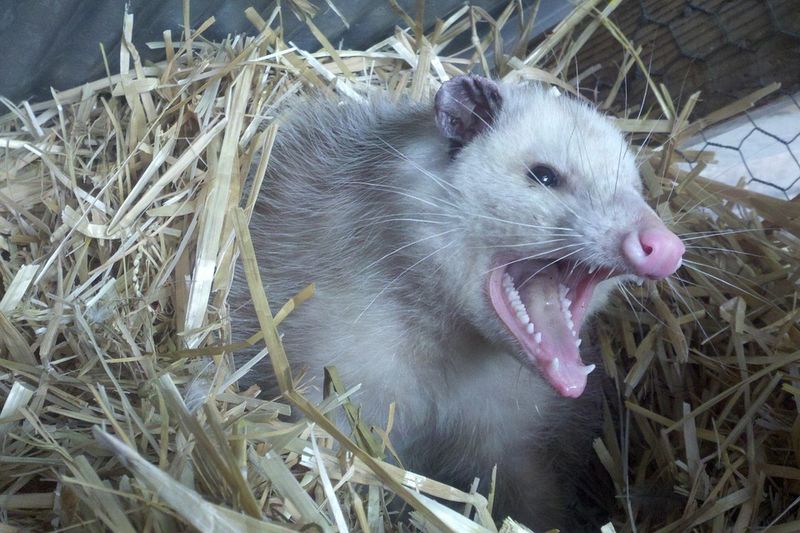
Opossums, often spotted scurrying through backyards, have a surprisingly large number of teeth. With 50 teeth, they hold the title for the most teeth of any North American mammal. These sharp teeth are crucial for their omnivorous diet.
From fruits to insects, opossums use their teeth to consume a wide variety of foods. Their dental structure supports their scavenging nature, allowing them to adapt to different environments.
Despite their fierce-looking teeth, opossums are generally non-aggressive, using their teeth more for survival than confrontation.
Shark
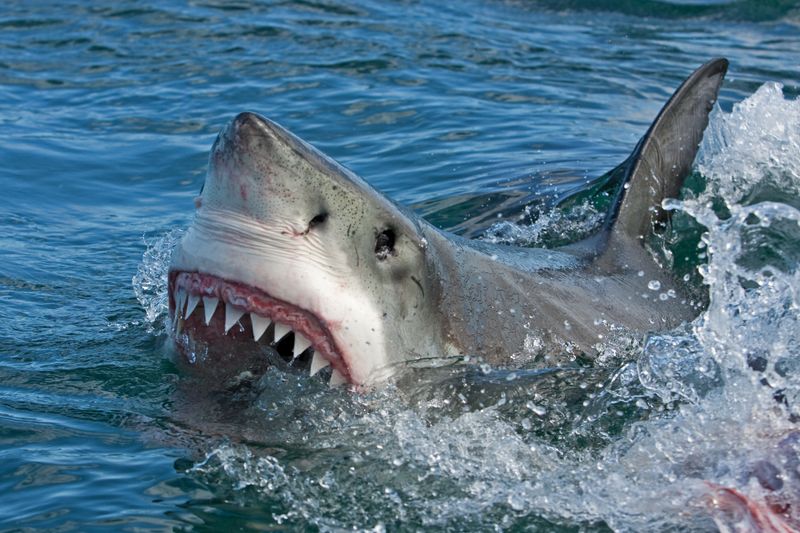
Sharks are renowned for their terrifying teeth, but the sheer number they possess is staggering. Some species, like the great white, can have up to 300 teeth arranged in multiple rows. These teeth are constantly replaced throughout the shark’s life.
This replacement system ensures sharks never run out of the tools they need for their predatory lifestyle. Their teeth are perfectly adapted for slicing through prey, making them efficient hunters of the seas.
With their formidable dental arsenal, sharks remain one of the ocean’s top predators, feared and respected by many.
Hippo

The hippopotamus, despite its herbivorous diet, possesses some of the largest canine teeth in the animal kingdom. These tusk-like teeth can grow up to 1.5 feet long and are used primarily for defense and combat.
Hippos may appear docile, but their teeth reveal their potential for aggression, especially when defending territory. Their incisors and canines are designed for intimidation rather than eating.
Interestingly, despite their size and dental weaponry, hippos are primarily grazers, feeding on grasses and aquatic plants, showcasing a gentle side amidst their powerful presence.
Elephant
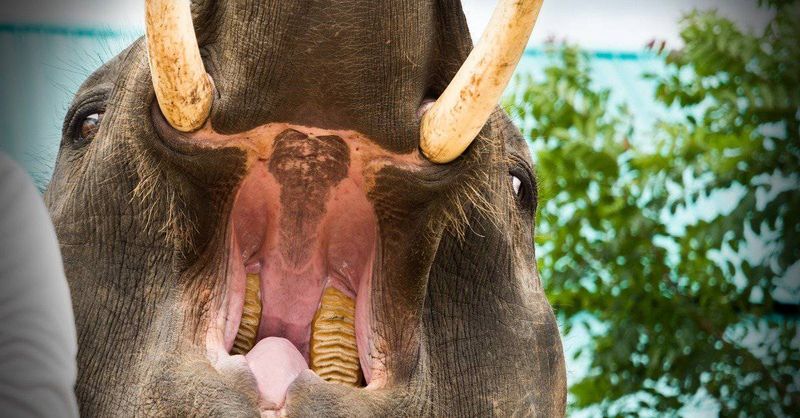
Elephants are known for their impressive tusks, which are actually elongated incisor teeth. These massive teeth can weigh over 200 pounds each and are used for a variety of purposes, including digging, foraging, and defense.
Tusks grow throughout an elephant’s life, reflecting their age and experience. The social and survival roles of these teeth are crucial, as they help in accessing resources and protecting the herd.
Despite the grandeur of their tusks, elephants are gentle giants, using their teeth predominantly for non-aggressive activities, embodying strength and wisdom.
Goose
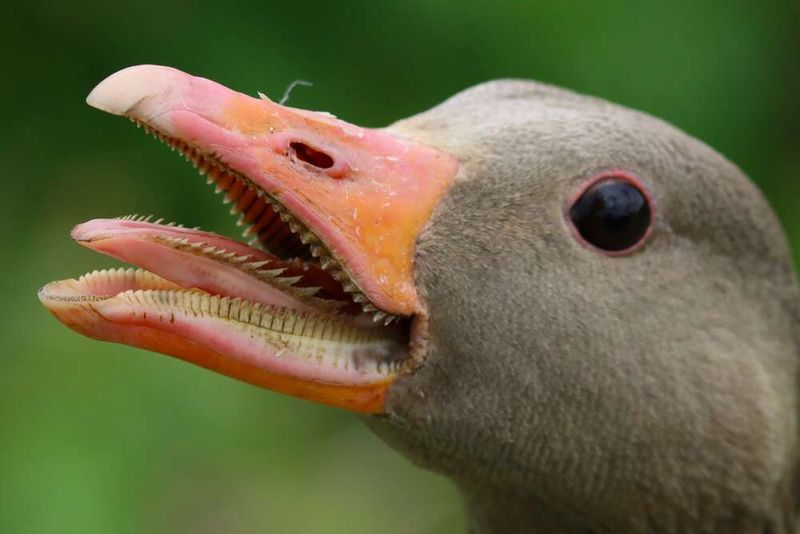
Geese might not be the first animals you think of when it comes to teeth, but their beaks tell another story. These birds have tomia, serrated edges on their bills that function much like teeth. This adaptation helps them grasp, tear, and eat their food efficiently.
Though not teeth in the mammalian sense, these structures are crucial for geese as they forage through grass and crops. The serrations are especially useful during aggressive displays, making geese formidable defenders of their territory.
Geese symbolize various cultural heritages and have been domesticated for thousands of years, valued for their meat, feathers, and as natural lawn mowers.
Snail
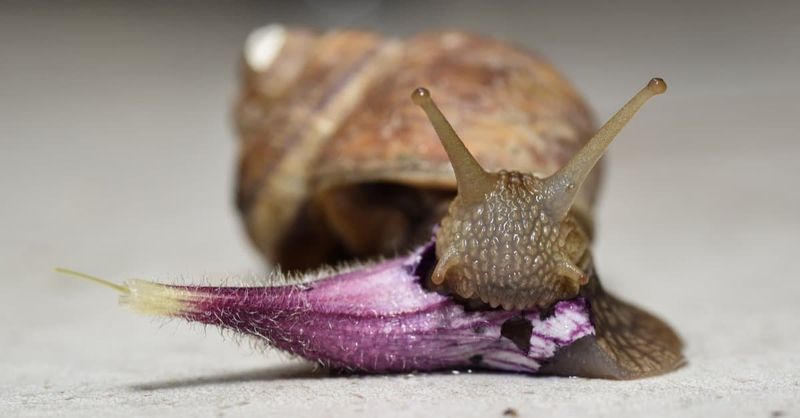
Did you know that snails, despite their slow pace, have more teeth than most animals? These tiny creatures house thousands of microscopic teeth on their radula, a tongue-like organ. A common garden snail can have up to 14,000 teeth, all designed to scrape food particles from surfaces.
These teeth are arranged in rows, working like a conveyor belt to move food into the snail’s digestive system. Though they are not teeth in the traditional sense, their function and abundance make them a fascinating subject of study.
This unique dental structure enables snails to feast on a variety of plant materials, making them both a gardener’s nightmare and nature’s recycler.
Giraffe

Giraffes, with their long necks, have evolved a dental structure that complements their unique browsing lifestyle. They possess 32 teeth, which might seem ordinary, but their arrangement aids in effectively grinding acacia leaves.
The giraffe’s teeth are designed to handle their tough diet, with molars and premolars perfectly aligned for processing vegetation. Their dental adaptation is integral to surviving in savannah environments.
With their gentle browsing habits, giraffes showcase an elegant combination of neck length and dental efficiency, allowing them to thrive in their ecological niche.
Koala
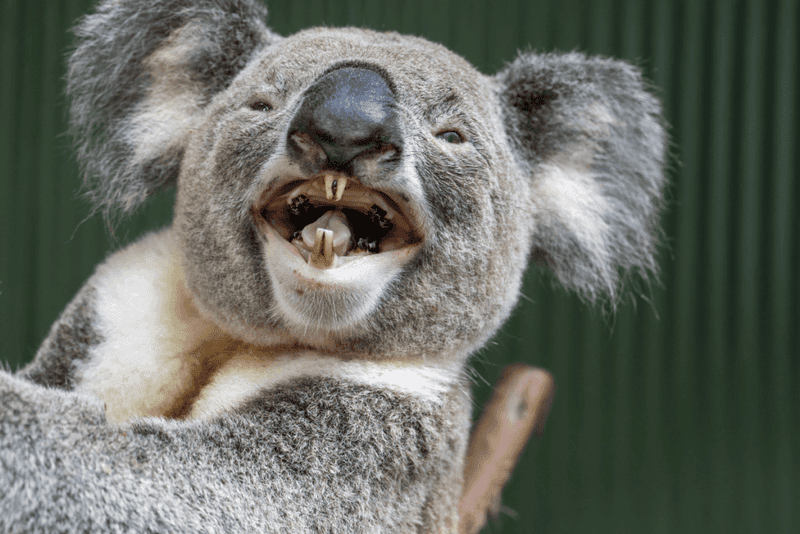
Koalas, often seen lazily perched in eucalyptus trees, have a surprisingly specialized set of teeth. With around 30 teeth, these marsupials are equipped to shear and grind tough eucalyptus leaves, their primary diet.
Their sharp incisors clip leaves, while molars grind them into a digestible paste. This unique dental setup is essential as eucalyptus leaves have low nutritional value and are difficult to digest.
Despite their sleepy demeanor, koalas’ teeth are a critical adaptation, ensuring they extract maximum nutrition from their exclusive diet.
Parrotfish
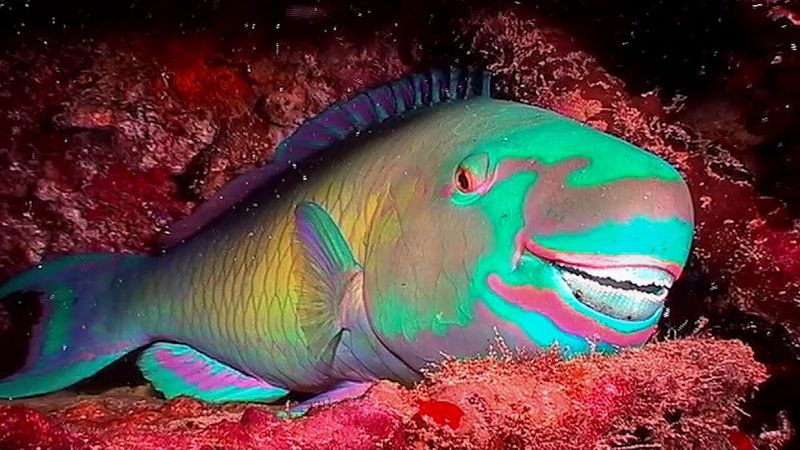
Parrotfish are a vibrant addition to coral reefs, known for their beak-like teeth. These dental structures are not just for show; they enable parrotfish to scrape algae and coral, playing a vital role in reef health.
The teeth of parrotfish are fused into a beak, allowing them to break down coral and produce sand. This process is crucial for maintaining the balance of coral ecosystems.
The parrotfish’s unique feeding habits, facilitated by their distinctive teeth, highlight their importance in marine environments, contributing to both biodiversity and habitat formation.
Beaver

The industrious beaver, known for its incredible dam-building skills, relies heavily on its teeth. These large, orange incisors never stop growing, allowing the beaver to chew through wood effortlessly.
Their teeth are as much a tool as a weapon, helping them sculpt the watery landscapes they call home. A beaver’s entire lifestyle revolves around the strength and durability of its teeth.
Babirusa

The babirusa, also known as the ‘deer-pig,’ boasts some of the most unusual teeth in the mammal world. Their upper canines grow upwards, curving back towards the forehead.
These tusks, found primarily in males, are used in display and combat with rivals. The bizarre curvature of the babirusa’s teeth adds to their mystical appearance in the dense Indonesian forests.
Despite their intimidating tusks, babirusas are generally peaceful, using their teeth more in social dynamics than in aggression, embodying a unique evolutionary path.
Camel
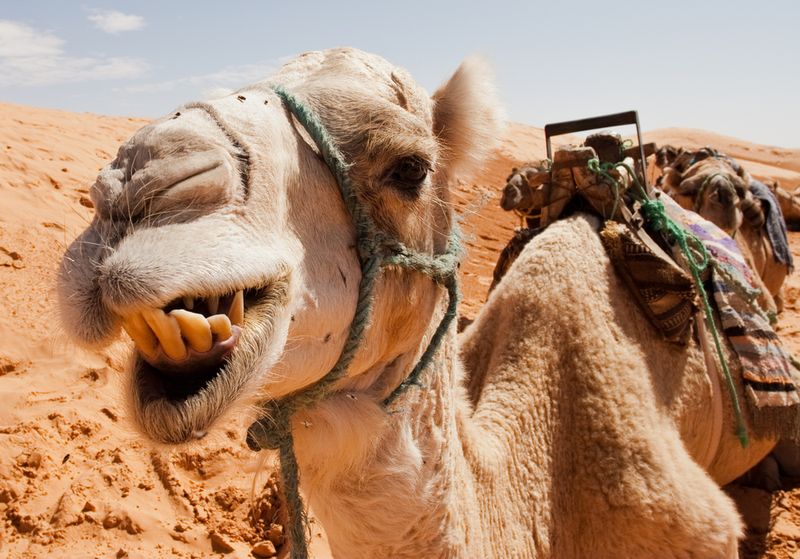
Camels, the ships of the desert, have a distinctive set of teeth that aid in their survival. Their large, flat teeth are perfectly adapted for grinding tough desert vegetation.
The robust dental structure of camels supports their herbivorous diet, allowing them to break down fibrous plants efficiently. This adaptation is vital for thriving in arid environments where food is scarce.
With their specialized teeth, camels epitomize endurance and resilience, perfectly equipped for life in harsh desert landscapes, navigating both terrain and diet with equal prowess.
Raccoon

Raccoons, those cunning nocturnal foragers, possess a surprisingly versatile set of teeth. With 40 sharp teeth, they are equipped to handle a diverse diet ranging from fruits and nuts to small animals.
Their pointed canines and flat molars enable them to tear, crush, and chew a wide variety of foods. This dental adaptability is key to their success in urban and wild settings alike.
Raccoons’ teeth highlight their opportunistic nature, allowing them to thrive across different environments and become a common sight in both forests and suburbs.
Vampire Bat

Vampire bats, the only mammal to feed solely on blood, have specialized teeth adapted for their unique diet. Their sharp, razor-like incisors are perfect for making small incisions in their prey’s skin.
These bats’ dental precision allows them to feed without waking their hosts, a testament to their evolutionary niche. The anticoagulant properties in their saliva prevent blood from clotting while they feed.
Vampire bats’ teeth reflect a fascinating evolutionary path, highlighting the complexity and diversity of adaptations within the animal kingdom.

